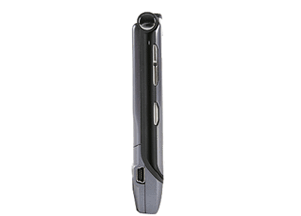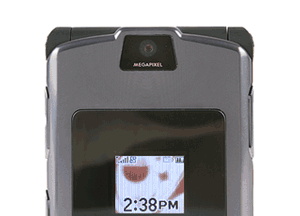Motorola Razr V3i

Siva's Review:
As the company that gave the world the slim cell phone, Motorola has been exploiting its Razr line for all it's worth. Besides coming in a wide range of colors, the Razr now has two CDMA versions: the Razr V3m and the Razr V3c; there's also a 3G GSM handset in the Razr V3x, and now a series of new models based on the Razr form factor. Yet even with such success, I am a bit confused by the Razr V3i. After the short life of the ill-received Rokr E1, I was wondering if Motorola would continue the Apple relationship. But Moto charged ahead with the Slvr L7 and now the V3i. While the iTunes Razr offers a huge improvement over the Rokr's boring design, it doesn't come without drawbacks. Besides patchy quality call and a sky-high $249 price tag with a two-year service plan, the V3i still has the annoying iTunes restrictions that turned us off to its predecessors. Despite these complaints, however, the combination of the world's most popular cell phone design with the world's most popular music downloading service will be music to many ears.

Fortunately, the V3i shows 262,000 colors on its 2.25-inch (176x220 pixels) main display. While the V3 supported the same number of hues, both the V3c and V3m reverted to 65,000 colors, a change we still don't understand. The color upgrade is welcome and graphics appear relatively sharp. I am not the biggest fan of the Motorola interface, but it looks better here than on many of the company's phones. In standard Razr fashion, the navigation controls and backlit keypad buttons are completely flat with the surface of the handset, but raised ridges between the individual rows make them more tactile than on the original V3. A five-way navigation toggle doubles as a shortcut to user-defined functions. There are also two soft keys, a dedicated menu button, shortcut controls for the camera and iTunes player, and the talk and end/power keys. And as is the case with other thin phones, the flat controls take some getting used to.
The 1,000-name phone book holds six phone numbers and an e-mail address in each entry; an additional 250 fit on the SIM card. You also get photo caller ID and a choice of 12 polyphonic ring tones (I am hoping for more). Basic features include a vibrate mode, text and multimedia messaging, a calculator, a datebook, voice commands and dialing, a speakerphone, an alarm clock, and instant messaging. Higher-end offerings run the gamut from POP3 and IMAP4 e-mail support to full Bluetooth.

The 1.2-megapixel camera takes pictures in four resolutions (1,224x768, 640x480, 320x240, and 160x120), but other options are limited to an 8X zoom, six color effects, five exposure settings, and a self-timer. I am hoping for a bit more from a megapixel camera, especially since you get five shutter sound choices besides a silent mode. The camcorder shoots MPEG-4 clips in two resolutions (176x144 and 128x96) with sound and a 4X zoom. Clips meant for multimedia messages are capped at a few seconds; otherwise you can shoot as long as the available memory permits. Photo quality was about what we expected for a megapixel shooter. Colors and objects were distinct, but brighter hues were a little washed out.
The Positive: The Motorola Razr V3i is an attractive slim cell phone with an admirable list of features.
The Negative: The Motorola Razr V3i's iTunes player has too many restrictions, and the phone's call quality could be improved. Also, I am hoping for EDGE compatibility.
The bottom line: Though I am still not won over by the iTunes/Motorola marriage and its call quality isn't the best, the Motorola Razr V3i offers music lovers a decent mix of design and features.

0 Comments:
Post a Comment
Subscribe to Post Comments [Atom]
<< Home